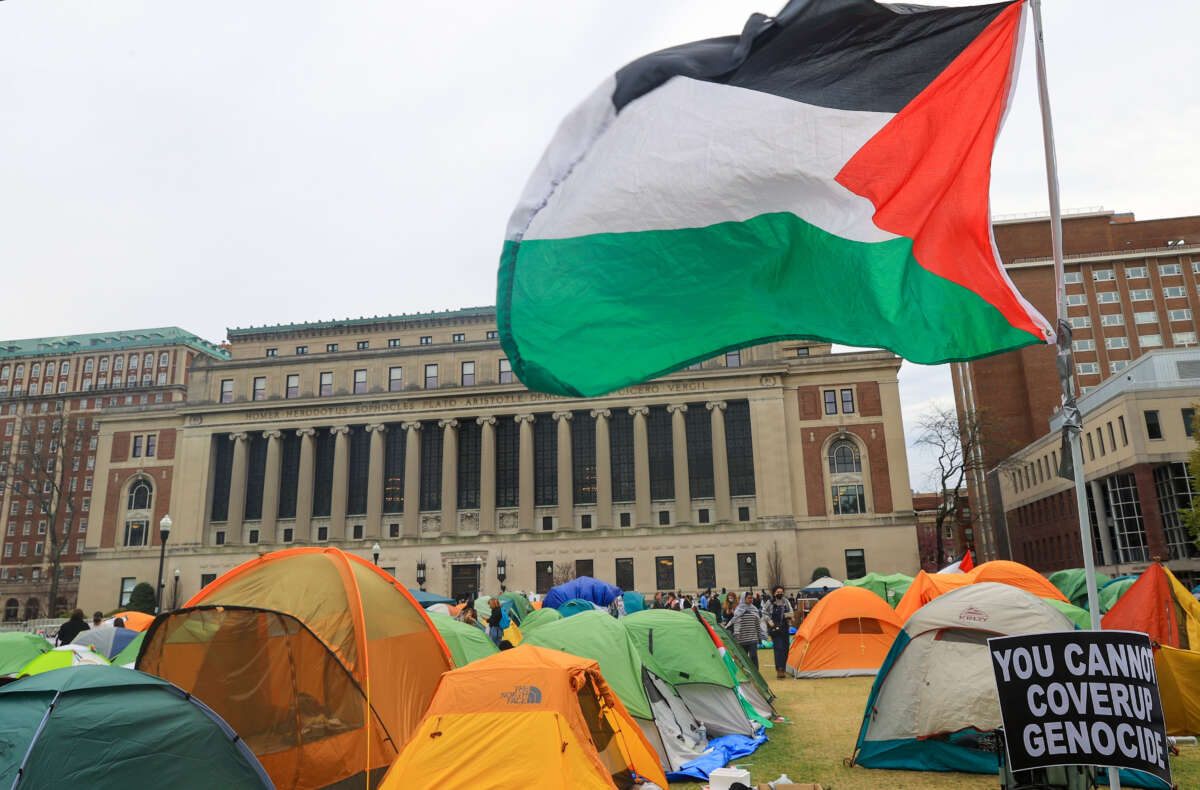On May 3, Columbia University’s campus was quiet.
There was already little evidence of the large pro-Palestinian encampment which had previously occupied a central campus lawn, other than a patchwork of faded marks in the grass where tents had sprung up and stayed for weeks before the final set of arrests on April 30.
Just before sundown, a large moving truck idled in front of the gender-inclusive Greek house Alpha Delta Phi Society. A network of student volunteers tossed items in clear garbage bags into the fraternity house, filling the living room, kitchen and the stairway. The stacks eventually reached six feet high and were piled on everything, including the house’s pool table.
They were filled with the confiscated belongings from both rounds of Columbia’s encampments.
In addition to the personal and donated belongings from the encampments, the bags also contained materials confiscated from inside an administrative office which activists occupied for just under 24 hours and renamed Hind’s Hall, in honor of a 6-year-old Palestinian girl, Hind Rajab, who was killed by the Israel Defense Forces.
Three days after the occupying students were arrested and the encampments dismantled, Columbia’s administration announced online that the belongings were available for pickup during a short window. But protesters feared being identified when they collected them.
Toward the end of the day, the administration posted that if the items weren’t claimed, they would be put into storage.
A network of students, organizers and allies quickly formed to save them.
They came out to collect the belongings, shield their owners from disciplinary action or doxxing, and figure out what to do next. For the next week, supporters would fold, organize and redistribute the items.
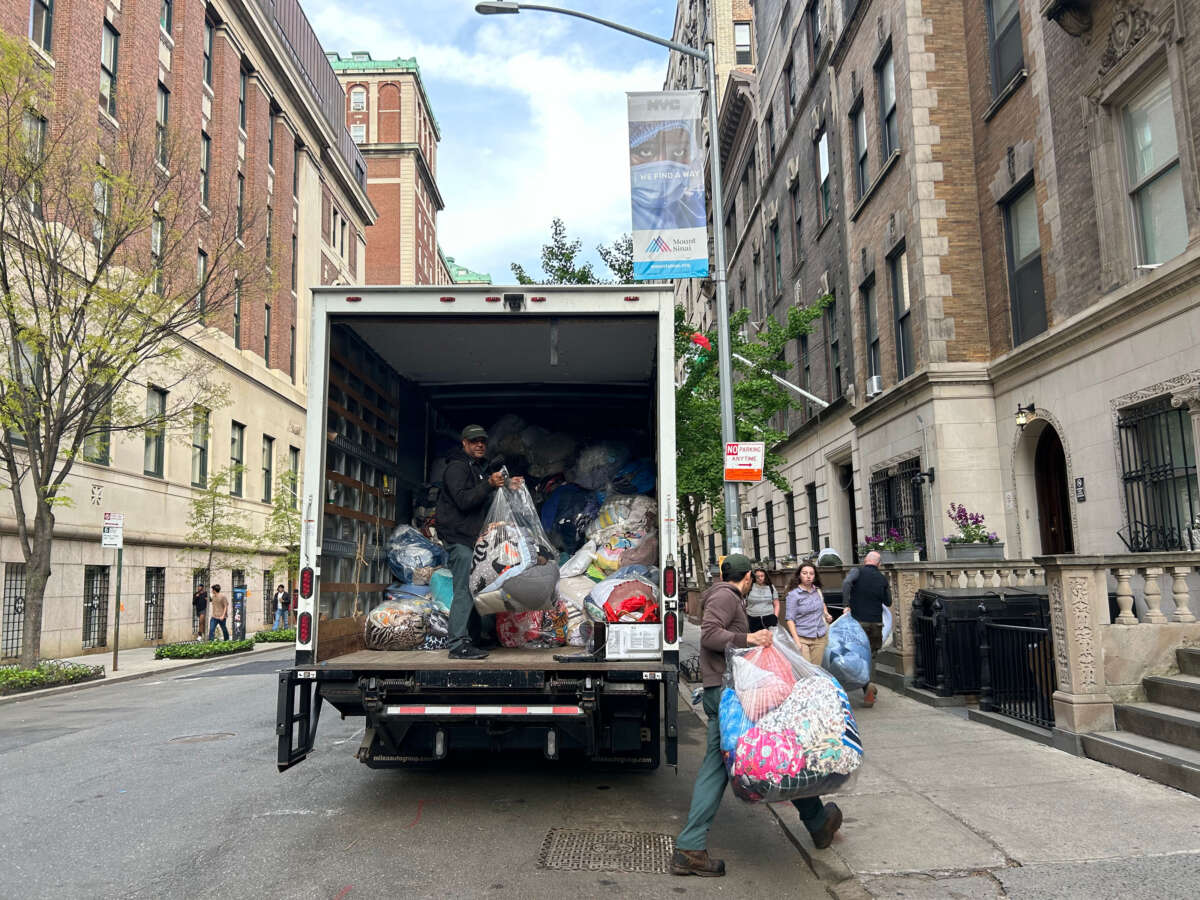
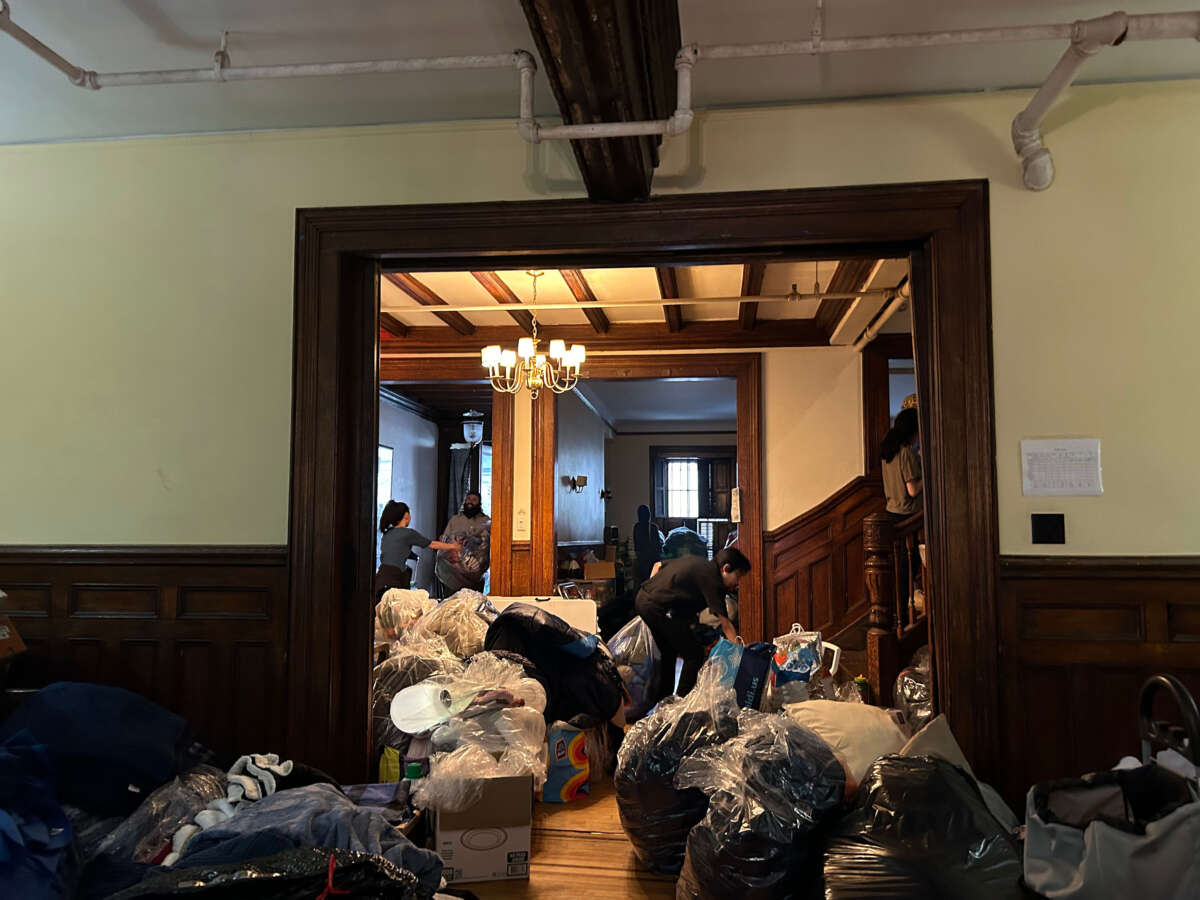
Systems of mutual aid, both impromptu and carefully organized, had characterized much of the Columbia protests, which primarily demanded financial disclosure and divestment from all Israeli connections.
These networks of support — which previously helped fill the encampments with blankets, coffee, homemade meals, flashlights and medical supplies — now helped redistribute those same goods in the encampment’s aftermath.
The networks attempted to return personal belongings to their owners, including wallets, Bibles and identification cards. Donated items were assessed for redistribution to local shelters by the Housing Equity Project, a student group that works with unhoused individuals.
“It’s not enough to just to do the disruption…. You have to have an alternative.”
“The students are very much grounded in what an alternative world would look like,” said Darializa Avila Chevalier, a member of Columbia class of 2016 who has been active in the alumni organizing space throughout the current student protests.
Chevalier, alongside a group of around 20 other alumni, organized an alternative reunion for alumni celebrating their 10th- and fifth-year reunions, to protest the current administration. That happened concurrently with the official reunion on the weekend of June 3.
“I’ve been forced to lean into things I hadn’t considered, it seems the movement calls for that,” Chevalier told Truthout.
Mutual aid, while often thought of primarily as donations and fundraising, has touched every angle of recent organizing efforts, from communal meals to open housing, legal aid and jail support.
“Back in January, I said if I never saw 1 Police Plaza [New York City Police Department headquarters] again it would be too soon,” said Chevalier of her repeated presence at jail support events, where activists sit in on arraignments, document police violence, and provide food, financial or emotional support to those being released after arrest.
“And now it’s like, all right, who’s ordering the pizza, who is getting the hand warmers. It’s just incredible to see how quickly people galvanize to support our friends and our comrades.”
For those deeply embedded within the current student movement, mutual aid has been pivotal in keeping the movement going after arrests and police violence.
“It’s not enough to just to do the disruption, or do the destruction,” said IAM clay, a student protester who was arrested inside the occupied Hamilton Hall. “You have to have an alternative.”
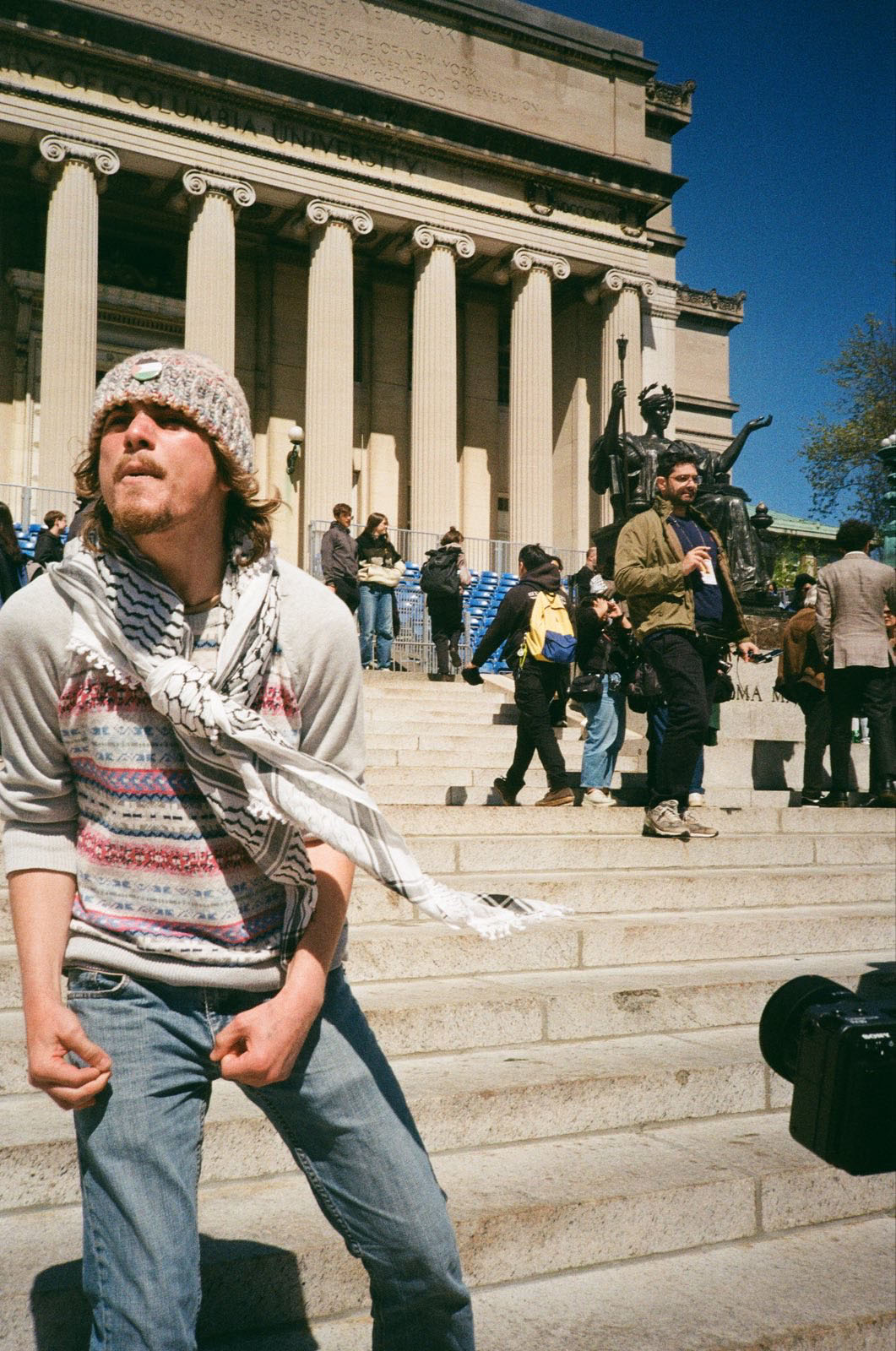
The future of clay’s organizing centers on mutual aid, which encompasses everything from strengthening tenant cooperatives to purchasing property to promote communal living and self-sustainability.
“All of this is movement knowledge that has been accumulated for hundreds of years,” clay told Truthout.
While based on communal values, mutual aid doesn’t guarantee constant cohesion inside organizing groups. clay described rifts between organizers and their efforts to repair them. During the campus movement, an outside mediation group was brought in to deal with anti-Blackness within the group.
For clay, it was a sense of shared immutable values that kept the group together even when individuals clashed. Those circumstances allowed them to practice the forms of care they wished to see more widely.
“I think that there is a general understanding that we have been prefiguring the kind of world that we want to see after the revolution through our actions,” said clay.
Monetary mutual aid expanded the encampments, furnishing the supply center known as the Cornucopia, and provided blankets and tents, allowing the protesters to continue their stay.
But a more emotional form of mutual aid allowed them to attempt to heal collectively once the encampments were destroyed. By the end of the school term, Columbia’s campus had seen two rounds of arrests, which culminated in a highly militarized operation in which police in riot gear cleared the campus of onlookers and proceeded to arrest activists, using force and causing injuries. It was later reported that an NYPD officer fired his gun inside Hamilton Hall during these seconds arrests.
Police presence remained on campus until after Columbia’s scheduled commencement, even after Columbia canceled the schoolwide ceremony.
On May 16, one day after Columbia held the official individual commencements for each of its schools, an alternative ceremony called the People’s Graduation was held at the nearby cathedral of Saint John the Divine.
Poets, activists, religious leaders and students came together for a ceremony designed to give space to those who were unable to graduate due to disciplinary action or felt alienated from the institution handing them their diploma.
Professor Manu Karuka, who teaches American studies at Columbia-affiliated Barnard College, was part of a group of around a dozen faculty and staff who helped to organize the event, beginning after the first set of student arrests on April 18.
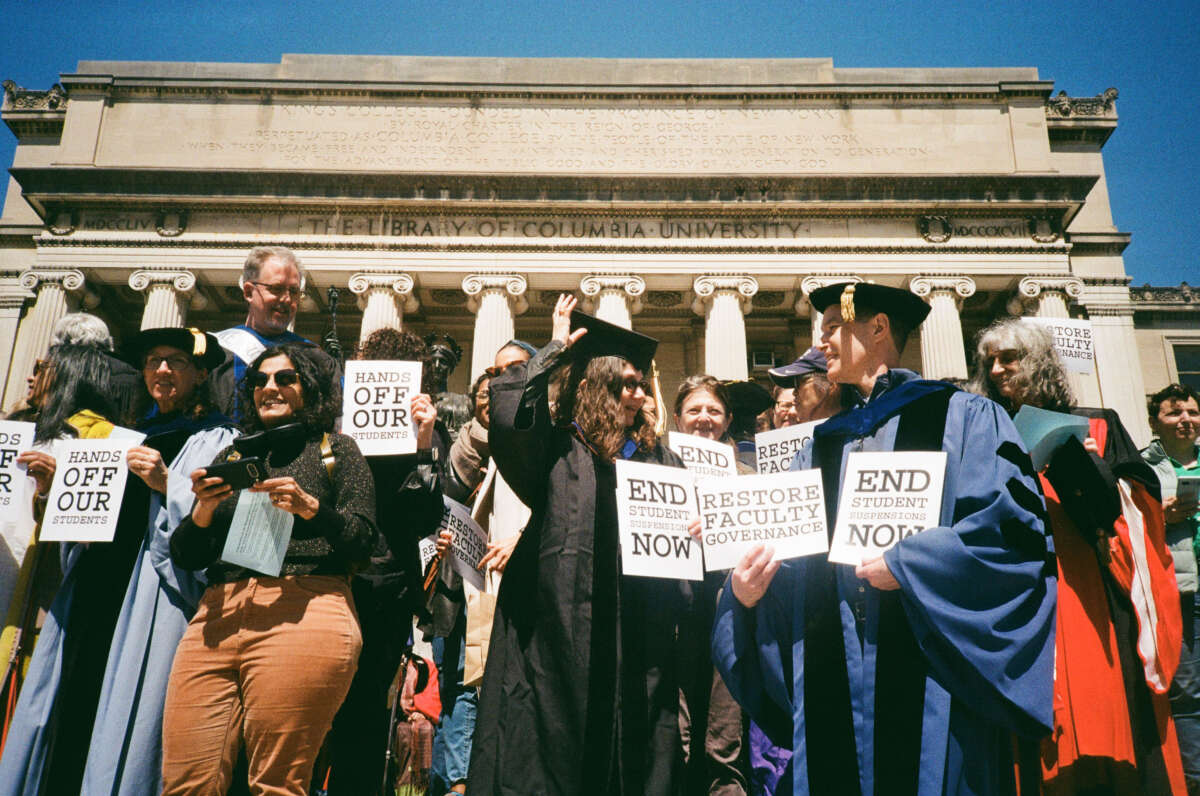
After the second round of arrests on April 30, Columbia University President Minouche Shafik invited the NYPD to remain on campus until after graduation. For Karuka, this deepened his resolve to host an alternative event.
“The police presence made it even more important for students to be able to have a space where they could feel safe and gather together — to recognize each other and be recognized,” Karuka told Truthout.
The event was created entirely on the donated labor and time of the organizers and speakers, who Karuka says refused to be paid for their participation.
In her commencement speech at the People’s Graduation, actor and poet Amanda Seales spoke before hundreds of graduating students and recognized the collective efforts of the crowd of students and organizers.
“Stand up if you have fed someone,” said Seales. “Stand up if you’ve been fed by somebody. Stand up if you have offered shelter to someone, if you’ve been sheltered by someone.”
For Karuka, the forms of mutual aid which have continued as the student movement evolves parallel what he sees as the deficits of their formal education.
“The very things that are breaking down, that students are being cruelly excluded from — those are the practices that the students have had to learn how to provide for each other,” said Karuka.
To Karuka, the students are creating new pathways toward a renewed form of education as they find their footing in a continuing movement for Palestinian liberation.
“It’s in this moment that acts of mutual aid become so crucial. What it’s doing is providing another framework of legitimacy,” said Karuka.
“It’s a better university.”
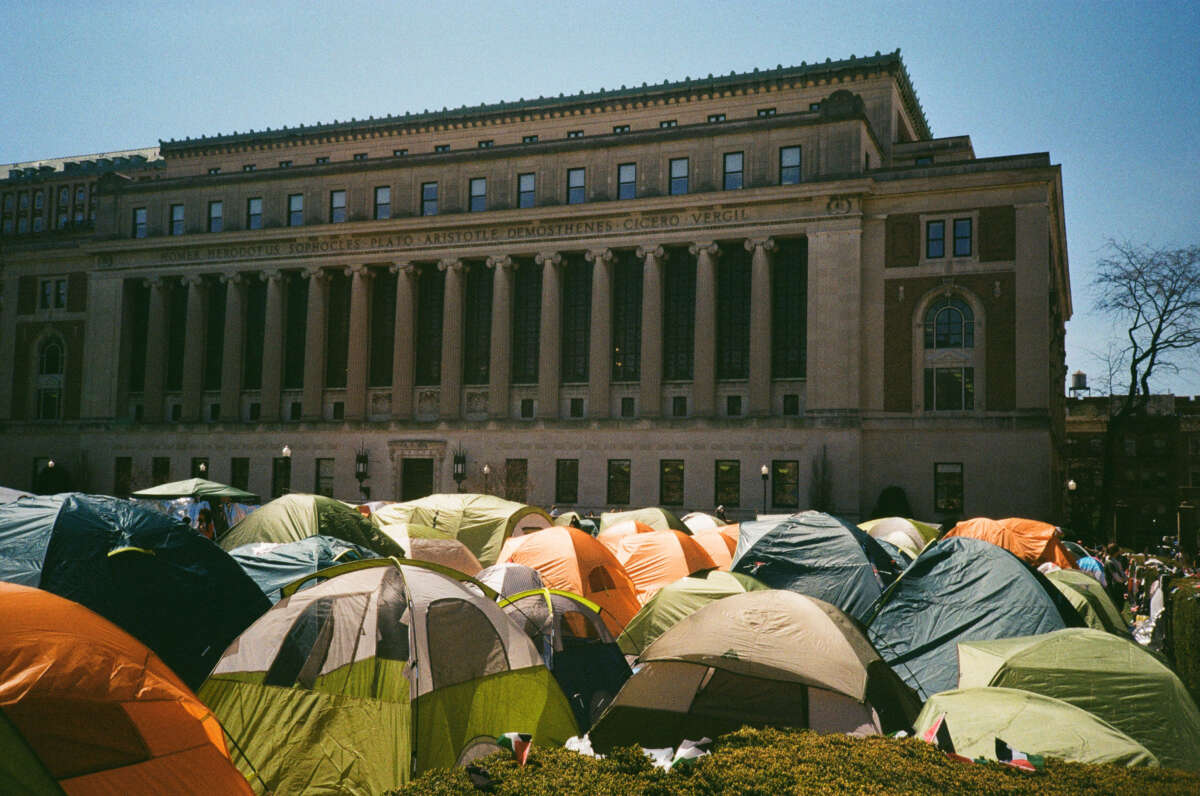
Our most important fundraising appeal of the year
December is the most critical time of year for Truthout, because our nonprofit news is funded almost entirely by individual donations from readers like you. So before you navigate away, we ask that you take just a second to support Truthout with a tax-deductible donation.
This year is a little different. We are up against a far-reaching, wide-scale attack on press freedom coming from the Trump administration. 2025 was a year of frightening censorship, news industry corporate consolidation, and worsening financial conditions for progressive nonprofits across the board.
We can only resist Trump’s agenda by cultivating a strong base of support. The right-wing mediasphere is funded comfortably by billionaire owners and venture capitalist philanthropists. At Truthout, we have you.
We’ve set an ambitious target for our year-end campaign — a goal of $119,000 to keep up our fight against authoritarianism in 2026. Please take a meaningful action in this fight: make a one-time or monthly donation to Truthout before December 31. If you have the means, please dig deep.
